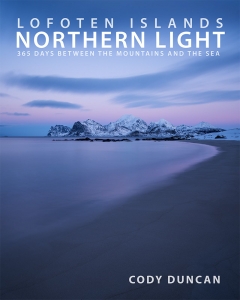
Photo: Clearing winter storm, Unstad beach, Vestvågøya, Lofoten Islands, Norway. January 7, 2010
For me, photography on the Lofoten Islands is more than just pointing your camera at something scenic and pressing the shutter. This is the first photo in my new ‘weekly photo’ series I’ll be posting every Friday. For the most part I’ll be selecting from Images already appearing on this site, but from time to time I’ll also post some photos that didn’t make it here for some reason which I still find interesting. In these posts I hope to go beyond simple descriptions of each photo and talk more about why I made the image, how I made the image, and other elements I think are of note.
Clearing storm at Unstad: It had been snowing heavily since the night before. I was now halfway through a short 5 day trip January trip to the islands. A trip that so far had shown me the islands in a way I’d never seen, nor photographed before; and which produced some of my all time favourite images.
By the afternoon on this day I was beginning to grow frustrated with having spent the day driving in circles without finding any scenes to shoot. Finally, as the light was fading I headed out along the snow covered road to Unstad to see if by chance the storm would have been deflected around the mountains. [note: Unstad can often have weather isolated from the rest of the islands. It can be extremely windy while most other places are relatively calm. Alternatively, Unstad can escape any detrimental weather hitting the rest of the islands.] Emerging at the far side of the tunnel, I found the snow had ceased falling, although it must have happened recently as the entire village and beach was completely covered and some of the residents had just pulled out their snow shovels and tractors.
I probably drove a little to fast in my excitement and desire to spend as much time as possible in the ever darkening light. The road to the parking lot on the right side of the beach hadn’t yet been cleared, so I drove as far as I could until I got stuck. I got out and walked down to the sea from there. Light is more important than a stuck car!
I spent the next hour shooting, until it was completely dark. This image, produced sometime about halfway though, remains one of my favourites. Something about snow covered rocks leading into the sea seem totally surreal for someone who grew up on the beach in southern California.
A few technical notes: With few exceptions, I always keep my camera white balance set to daylight. Firstly, because I learned photography on film, so I more of less know what I’m going to get in different lighting conditions. And Secondly, since I often combine multiple images for panoramics or square crops, it’s best to have a consistent white balance; and if I leave my camera on auto, I’d forget to change it 90% of the time. But, when shooting in dark, winter conditions like this, daylight white balance doesn’t work very well. The reason is that there is so much blue light present in the scene, that you will clip the blue channels while red and green remain underexposed. By switching to shade white balance, a more neutral exposure is produced, and thus you can make a properly exposed photo without clipping the blue channels.
Camera Info:
Nikon D700
Nikon 24mm f/3.5 tilt-shift
ISO 200
f 16
25 sec
WB shade
Single Image
No Filters




